Similar presentations:
Toxic- septic diseases of newborns
1. TOXIC- SEPTIC DISEASES OF NEWBORNS
Lecturer : Antonova G. A.2. Infection of a newborn at the postnatal period is possible through the hands of a staff, mother’s or through just contact with the sourсe of infection at the envireonment ( nappys, equipment, infusion solutions, food).
3.
Source of intestinal infection may besiuck child (salmonelesis), having infection
from the mother with that diseases or from
a carrier of this infection from the staff.
The transmission of infection is going
through the mouth , through the staff infected
hands.
4. It is possible to have such types of infection as:
staphyloccocus,etreptoccocus,
gramm- negative microbs:
- isherihia coli,
- clebsiella,
- protea,
- pyocyanic rode
5. Bacterial infections in the departments are going as a « Flashs», among the newborns of 5-6 days of living.
There are small forms of a staphylococcus infectionat the beginning:
Purulent ophthalmia,
vesiculo-pustulesis,
panaricii,
catharral omphalitis
rhinitis
This infections are without intoxication, fever,
anemia . It is possible the subfebril temperature.
Contuniation of diseases 3-7 days.
6. The more light form is pyodermia.
On the district place of skin (around ofumbilical wound, on the low part of
abdomen, subaxillar region, buttocks) there
are one or few vesicels very small size.
After rupture of that there is erosion, hilling
during 1-2 days.
The reatment is local: toilet of skin, bath with, 005%
solution of Potassium permanganate, treatment of a
skin gentian violet 1% in spirit.
7. Local forms with symptoms of intoxication are:
1) staphylococcus pemphigus, multpleabscesses, phlegmona;
2) injury of umbilical vein;
mastitis, orhytis, paratritis;
4) osteomilitis;
5) pneumonia, enterocolitis.
8. The more serious forms are- pemphygus and exfolliative dermotitis.
Pemphygus is started acute, superficial blistersappear on any parts of the skin; becomes
pustulesand than burst. The raw areas left
behind may be secondary infected. They tend
to appear in crops. Erosion is hilling at 7-10
days.
9. Exfoliative dermotitis.
The skin is affected on the all body, diffuse.It is acute diseases, with the symptoms of a heavy intoxication.
Around of mouth the distreacted rediness of a skin appears, during 12 days erhytema is spreading on the head, body, extremitas.
Row appears, epidermis is separated from the skin ang going as a wide
layers.
Newborn looks as a patient with severe burn ( the 2 degree) .
During a light touch the epidermis is going away.
Sepsis is a complication as a a secondary infection.
10. Diseases of umbilicus.
Non- septicSeptic
11. Non- infected
Fungus of a umbilicusAmniotic umbilicus
12. Septic diseases
Catarral omphalitis (ROW UMBILICUS)Оmpholitis
ulcer of umbilicus
diseases of veins
gangrena of a umbilicus
13. Row umbilicus
There is a serous discharges , epythelization is notperforming at term
the light hyperemia of skin aroud of umbilicus
infiltration of a umbilical ring
condition of a newborn is satisfactory
blood analysis is in norm
Treatment is local ( treatment of a wound with
hydrargium pyroxidate 3% solution, 5% t-rae Iodin,
2% brilliant green in spirit.
UV radiation of a wound.
14. Purulent ompholitis.
There are purulent discharges, spreading ofinfection on a subcuteneous tissue.
Skin is redish in color, has edema, veinsare
dilatated.
Newborn is not quit, pulse and breathing are
rapid.
15.
16. The good result will be in cases of a treatment in time.
No severe intoxicationHigh temperature is only during 3- 6 days.
Modarate lucocytosis
SEP is normal or slight increased
there are only few places of infection
17. Gangrena of umbilicus.
There is no cases of this complications afterdelivering in maternity home.
It startes from the first adys after delivery.
Anaerobic infection takes place.
Mumification of umbilicus performing, there is a bad
oder.
Sepsis occurs.
18.
19.
Localized purulent infection withsymptoms of intoxication are:
pneumonia,
meningitis,
enterocolitis.
20.
Pneumonia. As a rule , staphyloccocus isfinding, more rarely another infections.
Spreading of infection is performing
through the bronchs. Clinical symptoms
are:high temperature, respiratory distress,
pale skin, appearance a cyanosis during
crying, refuse of breast.
21. Ulcer of umbilicus.
It is a complication of omphalitis.On fundus of a wound is ulcer.
There are symptoms of intoxication.
22.
Purulent meningitis may be due grammnegative infection, or streptoccocus. Thebeginning of a disease is the end iof a first and
the second week after labour. The first
symptoms are common with another severe
diseases, proper symptoms are: apnoae, jaundice,
convultions. There very importnt the spine- brain
puncture and a liquior investigation. Mortality may be
40-50%, complications in future are:hydrocephalia,
spastics,epylepsia.
23.
Enterocolitis due to staphyloccocus has suchcharacteristic, as very often watery fecaes with a green
clots and addition of mucous, severe meteriorismus.
There is irritation of skin in the region of anus.
24.
Severe form of enterocolotis is ulcero-necrotis form. It isamonf the pre-term newborns. The local pathology of a
blood circulation, acydosis, tissue hypoxia take places at
this cases. Due to that necrosis takes place, ulcers
appear.Fecaes is with mucous and some blood. Mortality is 5070%.
25.
Sepsis is infection diseases, when themicroorganisms from the septic locuses are
going to the blood and going to the all organs
and tissues.Because of the low level of
immunity they can’t be removed very quickly.
There is insufficiancy of a specific and
non-specific system of defance from
microorganisms.
26. Among the full term babies the sepsis frequancy is1,6, but among the pre- term babies it is 14,5 on the 1000 delivery.
In etiology of a sepsis is high role of agramm- negative microorganisms,
pyacyanotic rode and another
microorganisms.
27.
Клинические признаки сепсиса чаще появляются уноворожденных на 2-3-й недели жизни, но у
недоношенных развитие заболевания возможно в более
ранние сроки. Сепсис у новорожденных чаще всего
протекает в виде септицемии, с резко выраженной
интоксикацией без явных очагов и метастазов. У ребенка
резко ухудшается общее состояние, повышается
температура тела, кожа становится бледной с сероватым
оттенком, тоны сердца глухие, появляется тахикардия,
снижается артериальное давление, нарастает одышка.
Усиливается и трудно подается коррекции
метаболический ацидоз. В крови отмечается лейкоцитоз,
нейтрофильного характера с резким сдвигом влево,
токсическая зернистость нейтрофилов. Развивается
склерема, коматозное состояние, ДВС-синдром, и ребенок
погибает.
28.
-- При рано начатой антибактериальной терапиитечение заболевания менее тяжелое, но постепенно
начинает прогрессивно ухудшаться.
-- Кожа приобретает серовато-желтушный оттенок.
Становятся выраженными признаки поражения
ЦНС, наблюдаются судороги
-- В результате интоксикации нарушается
деятельность всех органов и систем.
-- Увеличиваются размеры печени, нарушается ее
функции, что ведет к развитию
гипербилирубинемии
-- Увеличиваются размеры селезенки
-- Появляются изменения в моче с токсическим
поражением почек
29.
При септикопиемической форме имеютсягнойные метастатические очаги: флегмоны,
остеомиелиты, менингиты. Перитониты,
пневмонии, язвенно-некротический
энтероколит.
В настоящее время летальность при
постнатальном сепсисе колеблется от 3040%.
При локализованных и генерализованных
формах постнатальных инфекций, помимо
чисто врачебных действий, требуется
принятие мер санитарноэпидемиологического характера.
30. Терапия сепсиса
31.
32. В комплекс лечебных средств включают
АнтибиотикиДетоксикационные средства
Иммуноглобулины
Витамины
Сердечные препараты
33.
ДО ПОЛУЧЕНИЯ РЕЗУЛЬТАТОВБАКТЕРИОЛОГИЧЕСКОГО
ИССЛЕДОВАНИЯ ПРИ ТЯЖЕЛОМ
ТЕЧЕНИИ ЗАБОЛЕВАНИЯ ПРИМЕНЯЮТ
КОМБИНАЦИЮ АНТИБИОТИКОВ
ПЕНИЦИЛЛИНОВОГО РЯДА С
АМИНОГЛИКОЗИДАМИ ИЛИ КЕФЗОЛОМ
ПОСЛЕ ИДЕНТИФИКАЦИИ
ВОЗБУДИТЕЛЯ ПРИМЕНЯЮТ
ПРЕПАРАТЫ НАПРАВЛЕННОГО
ДЕЙСТВИЯ
34. Стимулирующая терапия включает применение: - плазмотрансфузии - иммуноглобулинов
В целях улучшения обменных и окислительновосстановительных процессов назначаютвитамины С, В1, В2, В6.
Инфузионную терапию проводят с учетом потери
электролитов и жидкости. При необходимости
осуществляют форсированный диурез с
помощью сорбита, маннита, лазикса и эуфиллина
35. ПРОФИЛАКТИКА
Необходимо неукоснительно выполнятьсанитарно-гигиенические и
противоэпидемические мероприятия в родильном
доме, направленные на выявление и ликвидацию
источника инфекции и путей ее передачи, на
повышение устойчивости плода к инфекции
новорожденного, раннее прикладывание к груди
матери, своевременное выявление новорожденных
группы риска (по внутриутробному
инфицированию) и санация очагов инфекции.




















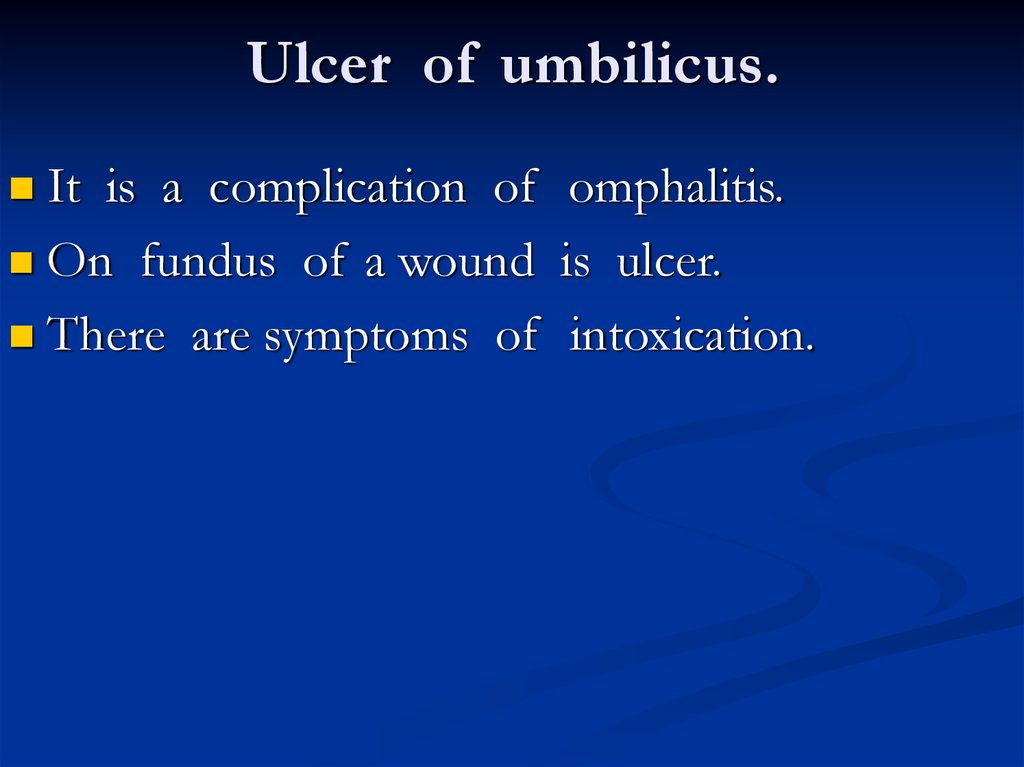




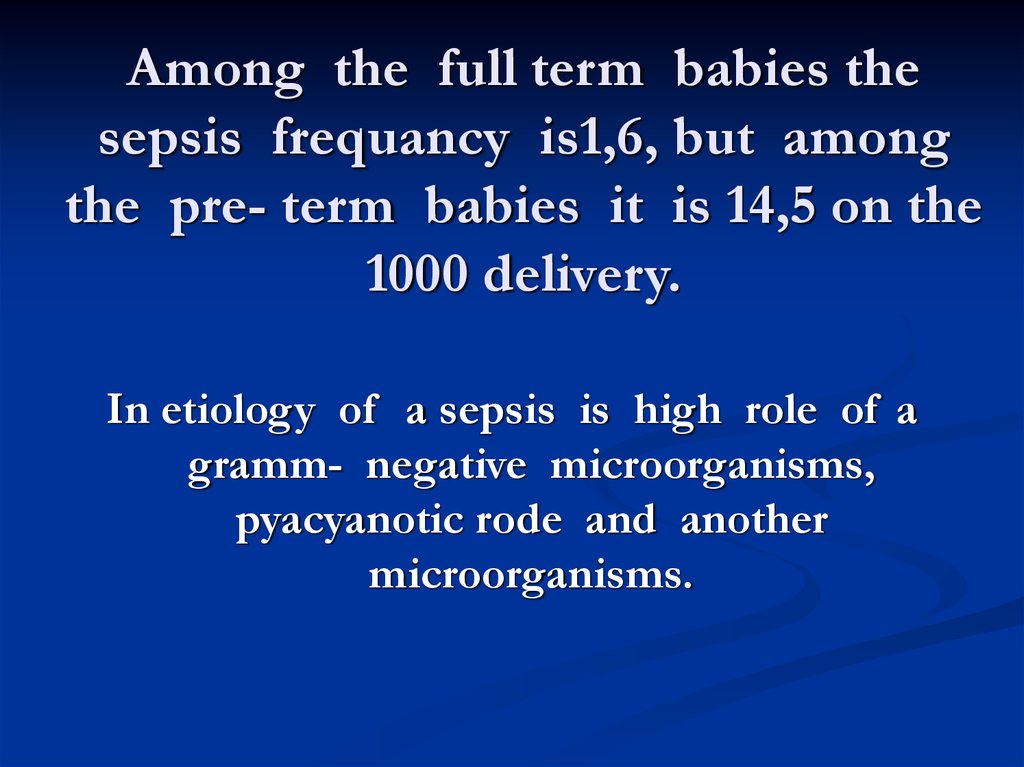



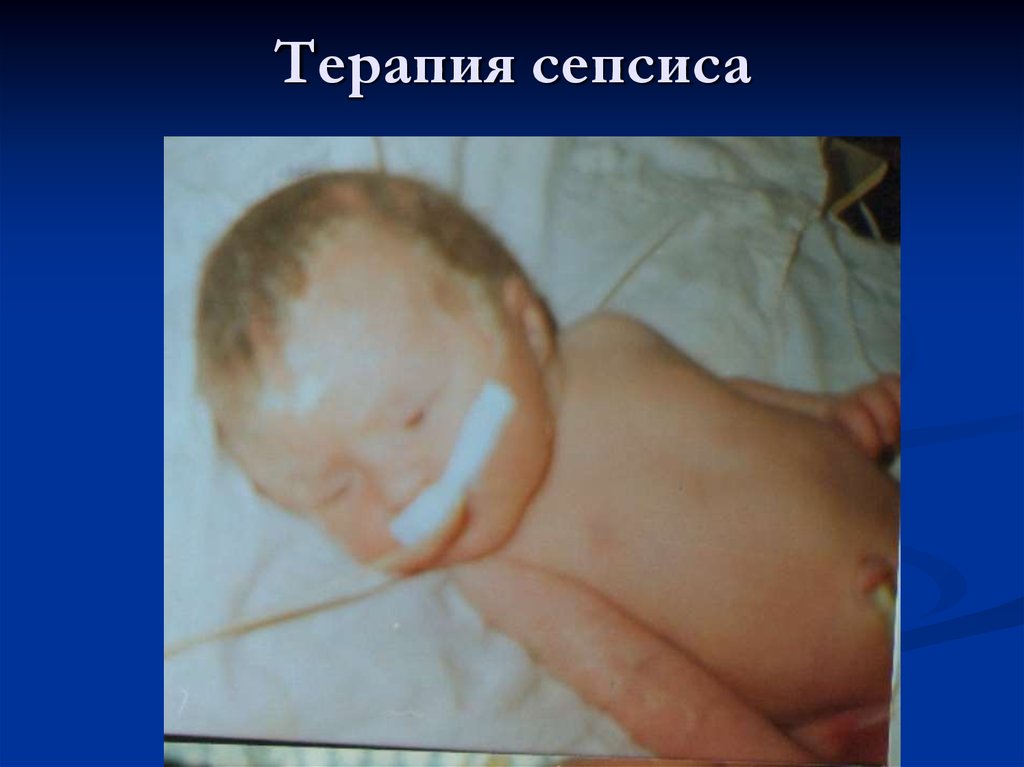

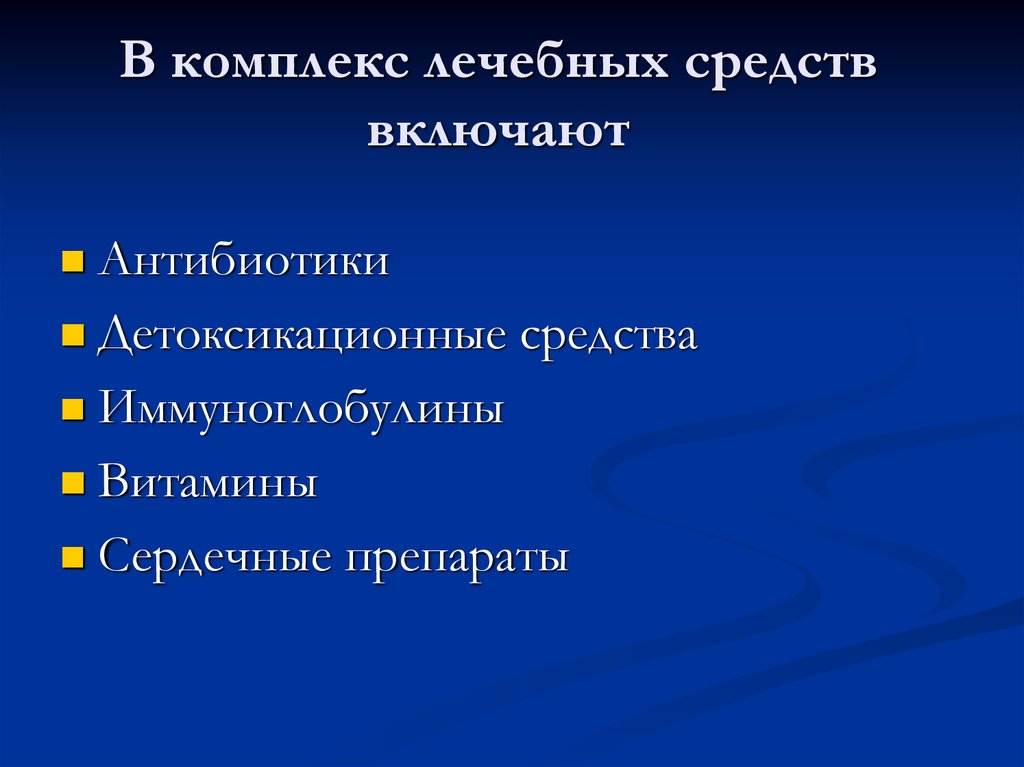


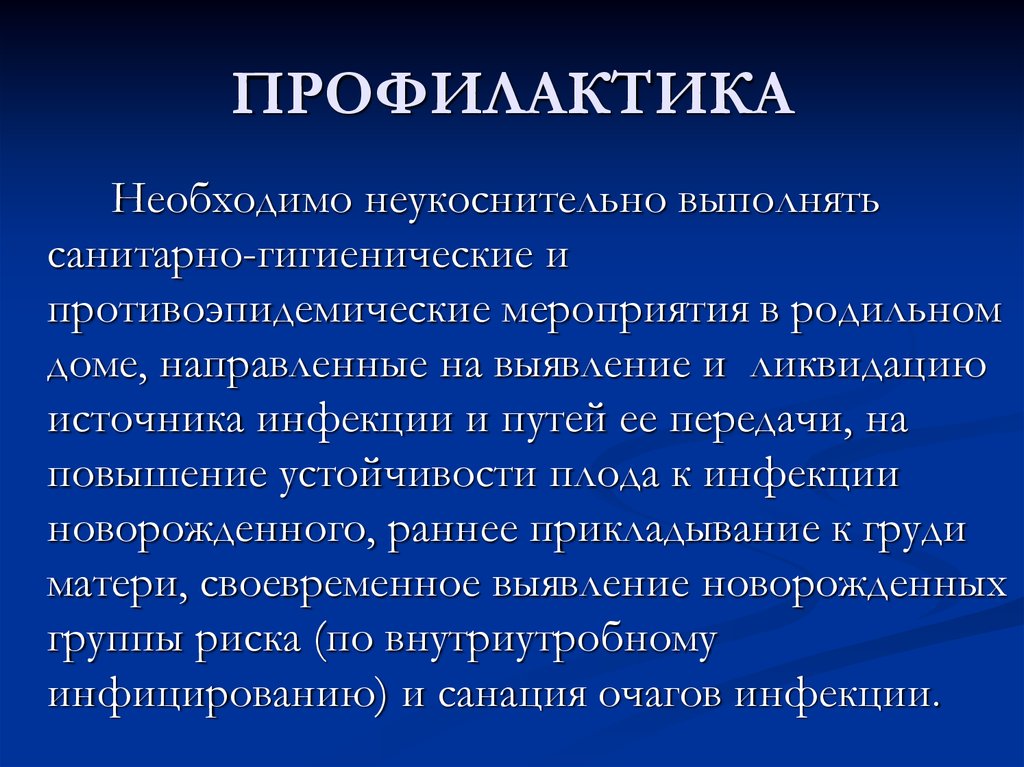
 medicine
medicine








